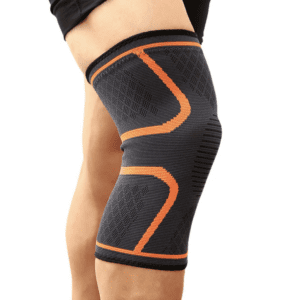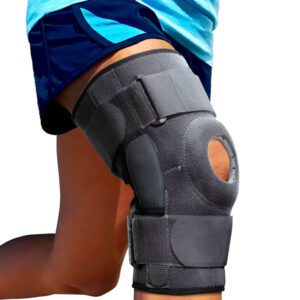In a perfect world, we would all have the energy to exercise regularly, eat healthy foods and get enough sleep. But in reality, many of us don’t have time for these things or we struggle with motivation. If you’re feeling like chronic inflammation is taking over your life, it’s time to take action! Here are three experts’ tips on how to decrease inflammation so you can live better today!
What is inflammation and how does it work in the body?
Inflammation is your body’s natural response to harmful stimuli such as germs and damaged cells. When this happens, it triggers the release of chemicals that cause blood vessels to dilate (get larger) and attract white blood cells to fight against the “invaders.” While it helps protect your body from infections, inflammation has its downsides because it can disrupt your sleep, weaken the immune system and cause pain and stiffness.
“Inflammation has been called the silent epidemic because so many people live with chronic inflammation,” says Heather Caplan MS, RDN , owner of Nourish 360 in Bohemia, NY. “It’s usually caused by a poor diet and not exercising, and it can lead to a variety of diseases.”
While you can’t always see or feel it, chronic inflammation may be slowly harming your body. Left unchecked, it can even contribute to chronic diseases and premature aging. But there are actions you can take to decrease this damage. That’s why we consulted three dietitians to get the insider scoop on what they do daily to reduce inflammation and stay healthy.
The link between chronic inflammation and chronic diseases
“Inflammation is a part of the body’s natural response to disease, injury or irritation,” says Travis Stork , MD, host of The Doctors . “But chronic inflammation over time can cause disease in and of itself.”
Chronic diseases such as cancer and heart disease have been linked to inflammation. If you suffer from any of these conditions, it’s important to find ways of reducing chronic inflammation and getting relief.
How dietitians reduce inflammation
As experts on nutrition and eating right, dietitians are in an ideal position to keep their bodies healthy. “It’s my job to be as healthy as I can,” says Leah Kaufman , MS, RDN , owner of Tasty Balance Nutrition in New York, NY. “I’ve worked with a lot of people on weight loss and I see the effects that inflammation can have long term. Not only is it uncomfortable but it also slows you down.”
Leah’s tips for reducing inflammation
1. Drink green tea to reduce radiation damage after getting an x-ray or CT scan.
“A lot of x-rays and CT scans use radiation, so when you get them, your body releases inflammatory markers,” says Leah. “In a small study in the Journal of Nutrition , researchers found that people who drank green tea had less inflammation after getting a scan.”
Green tea has antioxidants called polyphenols that protect the body by reducing cell damage caused by free radicals. So drinking a cup of green tea before or after getting an x-ray can help you recover faster and decrease your risk for inflammatory diseases such as colon cancer, arthritis and asthma.
2. Reduce intake of inflammatory omega 6 fatty acids to lower pain levels.
Omega 6 fatty acids are natural fats that come from certain foods. Like other types of fats, they’re used to build cell membranes and make hormones. However, too many omega-6s in the body can cause inflammation and pain.
“I try not to get more than four percent of my calories from omega 6 on a daily basis,” Leah says. “It’s important to get the right balance of omega-6 and omega 3 fats. We’re told to eat fish for a healthy diet, but if you eat too much it can cause trouble.”
A good ratio of fatty acids is between one part omega-6s to four parts omega-3s. That means a maximum of 4 percent, or 20 grams, of your daily calories should come from omega-6 fats. If you eat a 2,000-calorie diet, try to cap it at 60 grams or less per day.
A healthy ratio can help reduce pain and stiffness in joints like knees and elbows, says Leah, who has been on a low-omega 6 diet for over a year. “I was in pain every day, and now I feel great.” She recommends eating salmon, walnuts and flax seeds for omega-3s.
Omega 6s are found primarily in vegetable oils such as soybean oil, corn oil and cottonseed oil. They’re also present in grains like wheat or oats, so try to replace these with healthier grains like quinoa or brown rice.
3. Use spices to increase the heat in your food and increase inflammation health benefits.
“Spices have anti-inflammatory compounds called phytochemicals,” Leah says, adding that she uses them regularly in her cooking because “there are many things we can do to reduce inflammation levels.”
Spices such as turmeric, ginger and paprika all have anti-inflammatory properties. You can add them to everything from stir fries and soups to pasta sauces. If you’re not a fan of spicy foods, Leah suggests adding fresh herbs like basil or mint instead. Not only will they add flavor to your food, “they’re also highly anti-inflammatory,” she adds.
Why some people are more prone to developing chronic inflammation than others
While chronic inflammation can affect anyone, some people are more vulnerable to it than others. If you have a family history of inflammatory diseases and conditions such as asthma or arthritis, your risk is greater. This is because genetics factor into your chronic inflammation risk.
“Environmental factors such as smoking and poor diet can also increase your chances of developing it,” Leah says. Other things that may contribute to inflammation include the following:
● Stress, such as from a new job or marital difficulty
● Sitting for long periods of time without moving
● Being overweight or obese
● Being sedentary, such as from desk work or driving a lot
● Rare, severe allergic reactions to foods and insect bites
How you can decrease your risk of developing chronic inflammation through diet, exercise, and lifestyle changes
If you have one of these factors, or if you simply want to reduce your risk for inflammation-related diseases like arthritis, Leah recommends removing these things from your life or at least cutting back on them.
● Get at least 20 minutes of aerobic exercise, such as running or walking, on most days of the week.
● Replace unhealthy fats with healthier ones, like omega-3s and monounsaturated fat (found in olive oil). Avoid saturated fats found in meats and dairy products.
● Eat more fruits and vegetables that are high in anti-inflammatory vitamins and minerals.
● Reduce stress by finding hobbies or activities that help you relax such as journaling, taking a bubble bath, listening to music or reading.
Try these tips for reducing inflammation in your life. If they work for you, consider making additional changes to your diet and lifestyle to increase inflammation health benefits.
Three expert tips for decreasing inflammation with food choices- including what foods to eat, which foods to avoid, and when it’s okay to indulge (hint hint…it’s all about balance)
Tip #1: Avoid sugar. “The most important thing you can do is to cut out added sugars,” says Heather Caplan. Added sugars are found in everything from soda, fruit juice, pastries, breakfast cereals and yogurt to chocolate, ketchup and even condiments such as salad dressings. “When people cut out added sugars, it’s not uncommon for the inflammation in their body to drop by 40%–45% in just one month,” she says.
How much sugar is too much? The American Heart Association recommends that you limit your added sugar intake to six teaspoons for women and nine teaspoons for men per day.
Tip #2: Eat more omega-3s. A high intake of omega-3 fatty acids may benefit your heart health by lowering inflammation levels in the body. According to a recent Harvard study, people who ate fish at least once a week had lower markers of inflammation than those who limited themselves to fish less than once a month.
“The best sources of omega-3s are fatty fish like tuna, salmon and sardines,” says Caplan. In addition, you may also get some from chicken and eggs. While there is no recommended amount of omega-3s that adults should eat each day, it’s a good idea to try to get at least two servings of fatty fish each week. One serving is about a half cup of cooked fish.
The omega-3 fats that are found in fatty fish and other foods may have another benefit: They appear to reduce your risk for both heart disease and Alzheimer’s disease, according to an analysis by researchers from the Harvard School of Public Health. The study was published in the Archives of Neurology .
Tip #3: Eat whole foods. While it’s important to eat plenty of fruits and vegetables, Caplan says that whole grains are an essential part of a healthy diet. “Whole grains have been shown to be better for inflammation than refined grains,” she says. “In other words, white bread is bad for inflammation but whole grain versions of that same bread are good.” Whole grains include brown rice, quinoa and oats.
Tips for exercising as a way to decrease inflammatory response in the body – including ways that don’t require any equipment or gym memberships!
Tip #1: Add strength training to your workouts. According to an American College of Sports Medicine study, strength training should be a part of every exercise routine. “Strength training allows you to increase the amount of lean muscle in your body,” says Heather Caplan. “Lean muscle helps regulate inflammation levels in your body.”
There are many different types of weight-bearing exercises that can help you build lean muscle tissue. Tried and true exercise options include squats, lunges and pushups. In addition, the more muscles you use during your workouts, the more calories you’ll burn which can also lead to improvements in inflammation levels.
Tip #2: Perform aerobic exercise. Aerobic activity, or exercise that gets your heart pumping for a sustained amount of time can help you lose weight and may even decrease inflammation in the body. “Aerobic activity includes high-intensity interval training (HIIT) as well as low-intensity endurance workouts,” says Caplan. “Although low-intensity endurance training can help lower inflammation in your body, high-intensity interval training is more effective.”
Tip #3: Try yoga. “Yoga is a great option for anyone looking to decrease their inflammation,” says Caplan. “Not only does it help you lose weight, but it also releases those beneficial hormones that can soothe your body and mind.”
All types of yoga—including Vinyasa , Ashtanga and Bikram —can help decrease inflammation in the body. “The key to getting the most out of your practice is to push yourself,” says Caplan. During a yoga class, you should hold certain poses for at least five breaths, but no more than 10 breaths.
And if you don’t have time for an hour-long class? Just try stretching at home a few times a week. Caplan recommends starting with the classic yoga poses, including downward dog, cat and cow, upward facing dog and triangle pose.
Ways you can change your lifestyle habits like stress management or sleep to decrease your inflammatory response
Tip #1: Stress less. “The biggest way to decrease inflammation-causing hormones in the body is by reducing stress,” says Katie Schilling, a registered dietitian at Lenox Hill Hospital. When you’re stressed, your body produces more cortisol—a hormone that can contribute to inflammation.
Tip #2: Get enough sleep. Sleep deprivation is associated with an increase in inflammatory chemicals like cytokines, according to a study published in the Journal of Clinical Endocrinology & Metabolism . The study included 48 men who were randomly assigned to either a sleep-restricted group or a control group who slept at least seven hours every night for two nights. At the end of each two-night period, participants had to perform a stressful task.
“Aim for seven hours of sleep each night,” says Schilling. “Start by adding five minutes to your bedtime each day until you realize the benefits.”
Tip #3: Manage your stress by having a healthy relationship with technology. “Remember to disconnect from your smartphone and other technology at least once each day,” says Schilling. “It’s not just how much time you spend on your phone, but the quality of time.”
To help reduce inflammation and give yourself a break from technology, Schilling recommends taking a short walk to clear your head. Keys, cash and other necessities should stay in your pocket so that you can leave the house without these items weighing you down.
Tip #4: Spend time with friends and family. “Social connection is key to reducing inflammation,” says Schilling. When we’re around people who make us feel good, it activates a response in our body that reduces inflammation. This can help you sleep better and manage your stress levels.
Tip #5: Laugh. “Laughter isn’t just the best medicine, it’s essential to reduce inflammation,” says Schilling. Several studies have shown that laughter can release chemicals in your body that suppress pain and stress, which are two factors that cause inflammation.
You don’t necessarily have to watch a comedy or travel with friends to find humor. “You can even find simple joy in a good book, joke or funny conversation with family,” says Schilling.
Tip #6: Get creative! When we’re stressed and our mind is racing from one thing to the next, it’s easy to forget your goals and get stuck thinking about everything that you need to accomplish today. The solution? Pick up a pencil, paintbrush or camera.
“There are many studies showing that artists can have lower levels of inflammation,” says Schilling. “Art allows us to express ourselves and brings joy to our lives.”
Tip #7: Get moving . Exercise has many health benefits, including stress reduction and reduced inflammation. You don’t need to become an athlete or start a rigorous exercise routine. Just make sure you’re getting some sort of activity each day, even if it’s just walking around the block.
Tip #8: Your diet is key to reducing inflammation. “Food can at times be your medicine,” says Caplan. “What you put into your body will have a direct correlation with how your body works.”
It’s important to remember that everything you do or eat will have an impact on how your body functions. That’s why it pays to think about what you put into your mouth and the ways in which stress may be affecting your health before, during and after work hours. And while there are no quick fixes for decreasing inflammation levels, incorporating these 8 tips can help make a big difference over time!
























